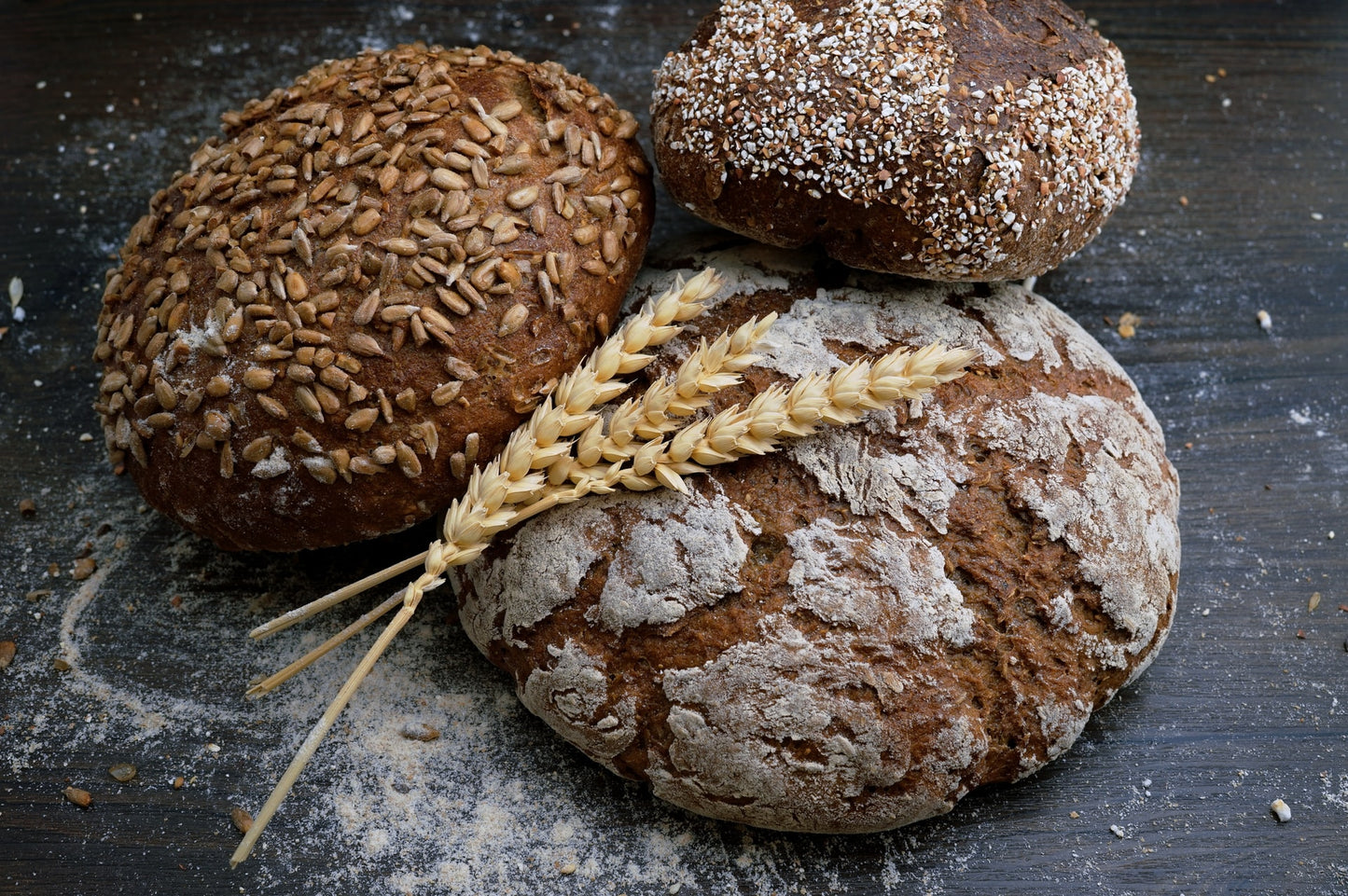
For those with celiac or gluten intolerance, the growing availability of gluten-free foods is a welcome and much-needed change. With an estimated 2.5 million people in the United States still undiagnosed, more options for gluten-free food choices can make it easier for people with celiac or gluten intolerance as they adjust to a new way of eating. Even with the increased awareness, there is still some confusion about gluten, gluten-free diets, and celiac. In honor of Celiac Awareness Month, we’re dispelling some of the most common myths surrounding gluten and celiac disease.
Myth 1: A wheat allergy and a gluten allergy are the same thing.
A gluten allergy, also known as celiac disease, is an autoimmune disorder that causes unpleasant symptoms and damage to the small intestine after eating gluten, which is a protein found in wheat, barley, and rye. While a gluten allergy and celiac disease are the same thing, a wheat allergy is different from a gluten allergy. Symptoms of gluten allergy can be severe and include gastrointestinal distress, weight loss, and anemia, to name a few. If left untreated, it may lead to other autoimmune disorders, neurological conditions, and infertility and miscarriage. Wheat allergy, on the other hand, is intolerance to foods containing wheat. Because wheat is only one of many sources of gluten, a person with a wheat allergy can eat other products with gluten and not be affected. Symptoms of wheat allergy are not as far-reaching as gluten allergy and include swelling, hives, and nausea. Both allergies can be treated by removing the triggers (gluten and wheat) from the diet.
Myth 2: Gluten allergy and gluten sensitivity are the same thing.
Gluten sensitivity is not as severe or rare as gluten allergy. It is possible for people to be gluten sensitive without having Celiac disease. In fact, some people who are gluten sensitive can still tolerate some gluten, while those with gluten allergy can’t. People with gluten sensitivity experience symptoms like abdominal pain, bloating, and other GI issues when they eat gluten. There is no testing for gluten sensitivity, but eliminating gluten from the diet can help keep symptoms at bay.
Myth 3: You can’t eat ANY grains on the gluten-free diet.
If you’re on a gluten-free diet, it’s true that many grains will be off-limits, including:- Wheat and its many forms
- Barley
- Bulgur
- Rye
- Triticale (hybrid grain made of wheat and rye)
However, there are a number of grains that are naturally gluten-free, including quinoa, buckwheat, millet, and rice. But even among gluten-free grains, cross-contamination is common so caution should be heeded.
Myth 4: “Gluten-free” means it is 100% free of gluten.
In 2013, the FDA released guidelines regarding gluten-free food labeling. According to these rules, a food can still be considered gluten-free if it contains 20 ppm (parts per million) gluten. To give you an idea, this is the equivalent of 1/8 teaspoon of flour in 18 slices of gluten-free bread. The FDA determined that 20 ppm was appropriate because it has been scientifically shown that this level of gluten does not have an adverse effect on people with celiac. While “gluten-free” refers to foods that have less than 20 ppm gluten in the ingredients, naturally gluten-free foods are inherently free of gluten.
Myth 5: Gluten-free foods are more nutritious.
Many naturally gluten-free foods, such as fruits and vegetable, nuts and seeds, and legumes, are also naturally nutrient-dense. Processed gluten-free foods, on the other hand, are no more nutritious than their gluten-free counterparts.
Myth 6: Eating a gluten-free diet will produce weight loss.
As with any fad diet, many people claim that a gluten-free diet can help you lose weight. This is true if you’re replacing gluten-filled processed foods with healthier gluten-free foods like fruits and vegetables. However, replacing unhealthy pastas, pastries, and other goodies with gluten-free versions probably won’t help you lose weight, since they’re only removing gluten (protein), not calories or fat.
Myth 7: I can have organic grains on the gluten-free diet.
Organic barley, wheat, and rye still contain gluten, so you should avoid them on a gluten-free diet. Remember, when looking for gluten-free foods, make sure they are either naturally gluten-free or labeled certified gluten-free.
Myth 8: Oats contain gluten.
Oats are naturally gluten-free. However, many people with gluten allergy avoid them, as they are often cross-contaminated with wheat and barley. This happens when oats are planted in soil that previously grew other gluten-containing grains, during harvesting if the equipment also handled gluten-containing grains, or even when the wind blows kernels of wheat or barley onto oats. You can still eat oats on a gluten-free diet, but make sure you research the brand to ensure you’re buying pure oats that have not been contaminated. You can always contact the manufacturer if you’re unsure, or check the label to see that a product is Gluten-Free Certified.
Myth 9: Hemp seeds are naturally gluten-free.
Like oats, in their naturally state hemp seeds are gluten-free. However, the same cross-contamination that occurs with oats also occurs with hemp seeds. You can still incorporate hemp seeds into your gluten-free diet, but make sure they’re gluten-free certified.
Myth 10: Cutting gluten from the diet is beneficial even if you don’t have Celiac Disease.
The gluten-free craze has led many people to believe that gluten is harmful and cutting it from your diet will result in a number of health benefits. However, going gluten-free is only beneficial to those who have celiac and gluten sensitivity. If you’re not gluten-intolerant, you likely won’t see any added benefit from cutting gluten (unless you’re replacing processed cakes, cookies, and other unhealthy foods with a healthier diet). Keep in mind, however, that celiac is notoriously difficult to diagnose. An estimated 2.5 million Americans are undiagnosed, so you may have celiac and not know it.
Myth 11: A product with “gluten-free” on the label means it’s safe for someone with Celiac Disease to consume.
In 2013, the FDA released guidelines regarding gluten-free food labeling. According to these rules, a food can still be considered gluten-free if it contains 20 ppm (parts per million) gluten. However, because it is new legislation, it’s likely that all manufacturers aren’t fully abiding by it. This can be particularly dangerous for people with gluten allergy, since even small amounts can cause serious side effects. The best way to determine if a food is really gluten-free is to check with the manufacturer. Ask if they actually test gluten levels in their products in a lab, and what the results are.
Myth 12: Celiac disease is easy to diagnose.
Diagnosing celiac disease involves a blood test, the tTG-IgA test, which detects the presence of antibodies that are higher in those with celiac disease. If the tests are positive, the doctor will order an endoscopic biopsy to confirm the diagnosis. Although the test is about 98 percent accurate for people who have celiac, those who have certain autoimmune disorders such as Type 1 diabetes, liver disease, and Rheumatoid arthritis have a 5 percent chance of a false positive. For people with celiac or gluten allergy, a gluten-free diet is a must. For others, it can be a foray into healthier eating. Whatever your reason for going gluten-free, knowing these common myths can help you make more informed decisions.
Written By: Jill Overmyer
Edited By: Scarlett Full, in house Registered Dietitian
